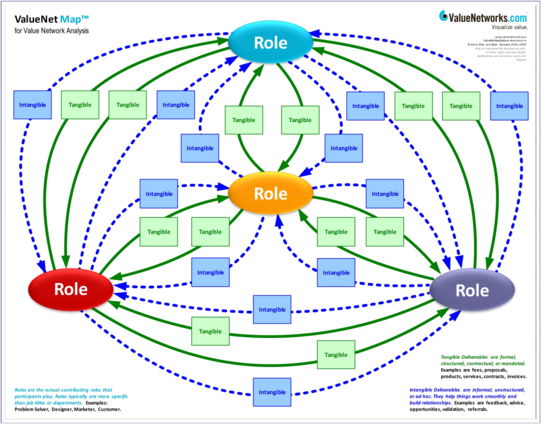How good are you at managing the relationships that your organization builds? As we move from a Product Dominant to a Service Dominant market, the relationships we create are at the core of our business model. However, how many of us understand these relationships? How many of us know what collaborative networks the other members of our team or organization are creating? Can we be successful, can we be social without this understanding?
Our world is increasingly more collaborative driving changes in the way decisions are made. Our organizations need to change to a more collaborative structure but the question is, where do we begin? I am always amazed how Lean happens to be there when I am ready to use it. It reminds me of the old Buddhist proverb, “When the student is ready, the teacher will appear.”
Back in 1976, the Union of Japanese Scientists and Engineers (JUSE) saw the need for tools to promote innovation, communicate information and successfully plan major projects. A team researched and developed the seven new quality control tools, often called the seven management and planning (MP) tools, or simply the seven management tools. Not all the tools were new, but their collection and promotion were. They are:
- Affinity diagram
- Relations diagram
- Tree diagram
- Matrix diagram:
- Matrix data analysis
- Arrow diagram
- Process decision program chart (PDPC)
Recently my use of the relationship diagram in particular has started to increase. Maybe not in the traditional sense of cause-and-effect relationships but the input/output connections between selected parts of the organization and the value that is created. The eerie part of this is that after creating several of these and one rather elaborate relationship map; I compared it to the Value Network modeling that had been introduced to me by Verna Allee, M.A., co-founder and CEO of Value Networks LLC. It was strikingly close to her model depicted below. (Verna introduced me last year to Value Network Mapping through this Business901 podcast, What’s behind Collaboration and Value Networks?).
From Value Networks and the true nature of collaboration by Verna Allee with Oliver Schwabe is a digital edition book located at Value Networks.
One of the items that has intrigued me a great deal over the summer has been The Last Planner® System (LPS). The Last Planner® was created by Glenn Ballard and Greg Howell co-founders of the Lean Construction Institute. In long term building projects, they have found that managing relationships is the important part of project management. Last week, I had a post that discussed this, Crucial & Collaborative Conversations for Predictable Design & Delivery and tomorrow; I have a podcast with Alan Mossman of The Change Business where we discuss this relationship style of project management. An excerpt from the podcast follows.
Joe: One of the things that you mention is “Collaborative Short Term Production Planning,” and the promise conversation cycle. Can you explain to the audience what that is?
Alan: This promise cycle is completed entirely in language. There is a request, there is the negotiation, there is a promise, there is a declaration of completion, and a declaration of satisfaction or dissatisfaction as appropriate.
What is missing, in my view, in a lot of construction, is that because of the critical path method, there is not enough time spent on managing promises, managing commitments. It’s all coming from directives. You will do this. You will do that. So the project manager is telling people what to do rather than ensuring that the people on the project understand what needs to be done, so that they are in a position to make offers and to make promises about what they will do.
The collaborative planning, collaborative programming, make ready, are foundations for Last Planners to make promises about the work that they will do next week, because they’ve got direct involvement in preparing the work to be done.
As our world changes, it seems that these relationships, these value networks and person to person interactions will not be decreasing but may be our critical path to success.

